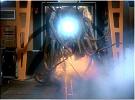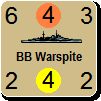Bullwinkle58
Posts: 11302
Joined: 2/24/2009
Status: offline

|
quote:
ORIGINAL: wdolson
Bulwinkle had the right idea even if the terms were a little off. During a declared war, US industry comes under control of the government. The government didn't take over many industries, though they did take over Brewster due to their incompetent management. The government pretty much dictated what company built what. The bureaucrats who were in charge realized that industrial leaders would work better if given a say, so a committee of government and industry people were put together in WW II, but that was just a tweak for better efficiency over past wars.
I think my term--socialism--was correct for US federal behavior during WWII. It was temporary, not structural, but it happened. Lots of people today don't know this history, however. Wikipedia is not always a great source, but this entry on the WPB is correct as far as it goes, and gives an overview to how deeply the federal government reached into the private sector during the war:
"The War Production Board (WPB) was established as a government agency on January 16, 1942 by executive order of Franklin D. Roosevelt.
The purpose of the board was to regulate the production and allocation of materials and fuel during World War II in the United States. The WPB converted and expanded peacetime industries to meet war needs, allocated scarce materials vital to war production, established priorities in the distribution of materials and services, and prohibited nonessential production. It rationed such things as gasoline, heating oil, metals, rubber, paper[1] and plastics. It was dissolved shortly after the defeat of Japan in 1945, and was replaced by the Civilian Production Administration in late 1945.
The first chairman of the Board was Donald M. Nelson from 1942 to 1944 followed by Julius A. Krug from 1944 until the Board was dissolved.
Established by Executive Order 9024 on January 16, 1942, the WPB replaced the Supply Priorities and Allocation Board as well as the Office of Production Management. The national WPB constituted the chair, the secretaries of war, navy, and agriculture, the federal loan administrator, lieutenant general in charge of war department production, administrator of the office of price administration, chair of the board of economic warfare, and special assistant to the president who supervised the defense aid program. The board created advisory, policy-making, and progress-reporting divisions.
The WPB managed twelve regional offices, and operated one hundred twenty field offices throughout the nation. They worked alongside state war production boards, which maintained records on state war production facilities as well as helped state businesses obtain war contracts and loans.
The national WPB's primary task was converting civilian industry to war production. The board assigned priorities and allocated scarce materials such as steel, aluminum, and rubber, prohibited nonessential industrial activities such as producing nylons and refrigerators, controlled wages and prices, and mobilized the people through patriotic propaganda such as "give your scrap metal and help Oklahoma boys save our way of life."[2] It initiated events such as scrap metal drives, which were carried out locally to great success. For example, a national scrap metal drive in October 1942 resulted in an average of almost eighty-two pounds of scrap per American.[3]"
http://en.wikipedia.org/wiki/War_Production_Board
_____________________________
The Moose
|
 Printable Version
Printable Version









 ), but I try to put myself in the mindset of each combattant.
), but I try to put myself in the mindset of each combattant. 






 New Messages
New Messages No New Messages
No New Messages Hot Topic w/ New Messages
Hot Topic w/ New Messages Hot Topic w/o New Messages
Hot Topic w/o New Messages Locked w/ New Messages
Locked w/ New Messages Locked w/o New Messages
Locked w/o New Messages Post New Thread
Post New Thread